Composites and synthetic materials are widely used in landscape design, architecture and construction in general. They organically enter both natural and artificial structures, performing the tasks of strengthening and correcting various forms. One of the most common materials of this type can be called a geogrid for strengthening slopes on steep slopes.
What is a geogrid?
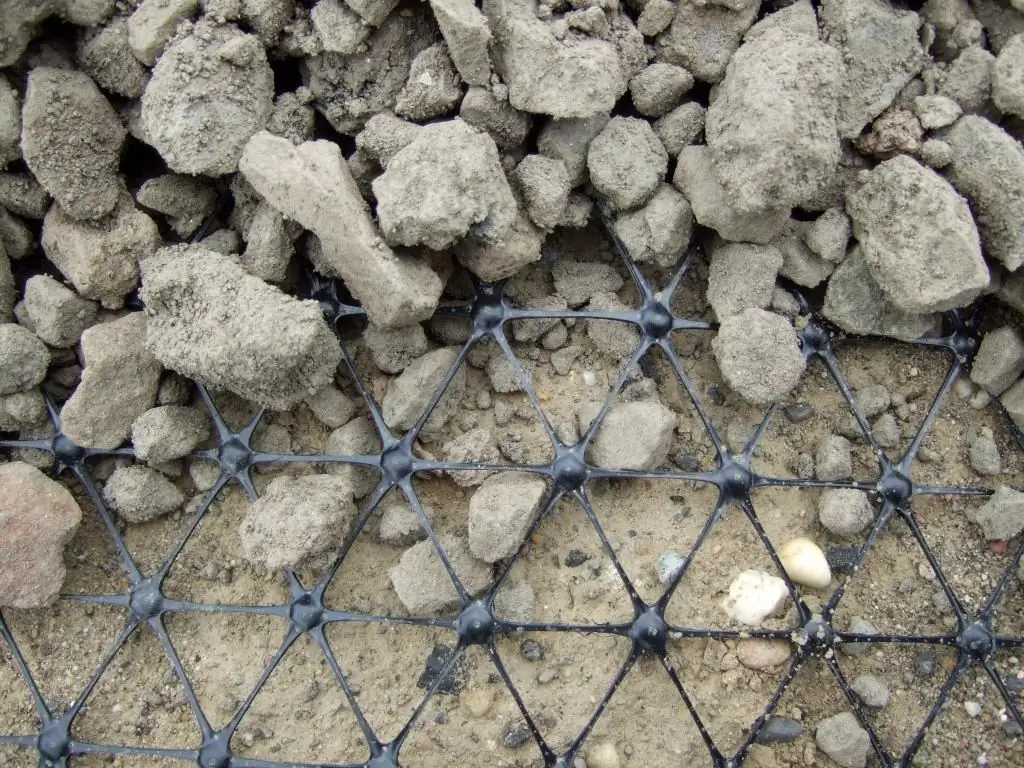
Until recently, engineering tools for solving problems of isolation or strengthening of open ground were mainly limited to variations of geotextiles. At a minimum, this was the situation in the areas of mass service of sites for various purposes. Improvement in the design of geosynthetics has made it possible to significantly expand the range of engineering tasks of this type, which has created a demand for the creation of an ergonomic reservoir with a flexible but strong structure. This is how you can imagine a geogrid forstrengthening of slopes, which performs the function of external reinforcement of soils, gravel and sandy surfaces. This type of synthetic grating is made of plastic strips, which are fastened together by welding, forming a cellular structure. During operation after laying, this synthetic creates anti-erosion protection of slopes and embankments in conditions of high slope steepness. Such tasks are relevant in the construction of roads, bridges, railway tracks, highway crossings, etc.
Volumetric geogrids
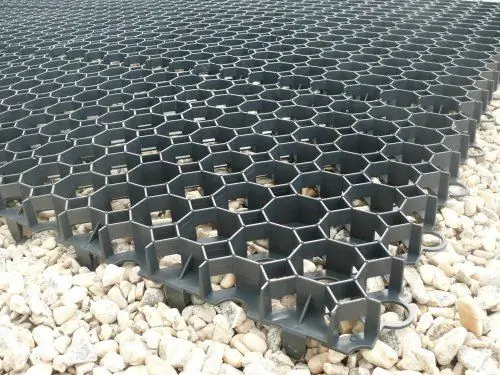
The most popular type of geogrid, due to the three-dimensional structure of its cells. The area of such coating, depending on the form of release in briquettes, varies from 10 to 25 m2. As for the material of manufacture, the volumetric geogrid for strengthening slopes is made from the following raw materials:
- Polymers. Inexpensive in price and practical synthetics, which allows you to produce a product in small sizes, but with high strength properties. Both solid and perforated tapes are made from polymers, which makes it possible to provide a drainage function.
- Textile fabric. The optimal solution for zoning layers, reducing the negative effects of frost heaving and reinforcing slopes.
- Concrete. A special kind of geogrid, thanks to which a common frame of reinforcement of the problem area is formed. As part of the concrete structure, the above geosynthetics can be used.
Flat geogrids
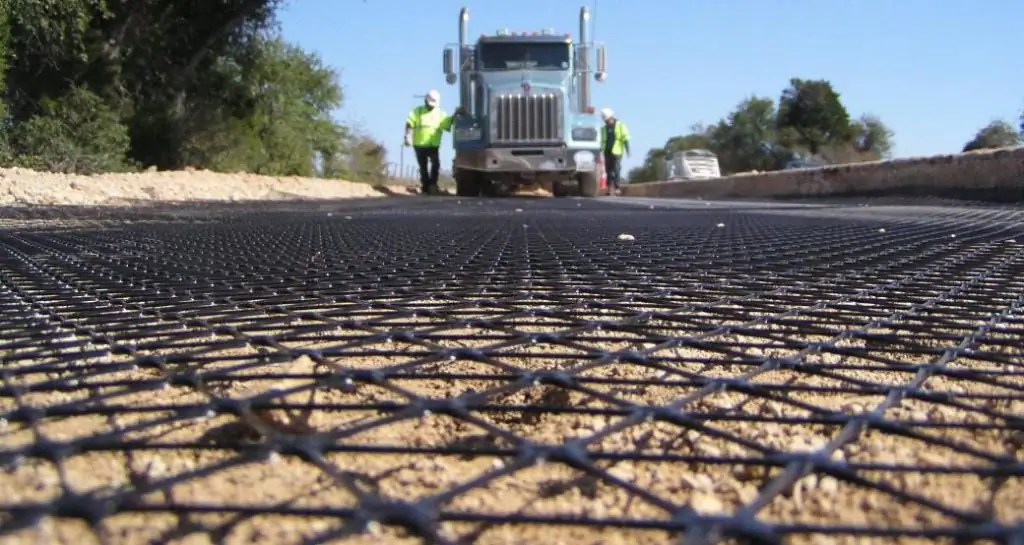
Also a lattice variation of geotextile, but with flat rectangular or square cells. As such, reinforcement of slopes with this material is rarely performed, but with its help, without increasing the height of the landscape, the following tasks can be more effectively implemented:
- Fixation of structural layers.
- Uniform distribution of dynamic and static loads over the area. In other words, indirect reinforcement of slopes with a geogrid with a flat structure is implemented.
- Increasing the bearing capacity of the warp.
- Reduce the risk of rutting and dips on roads.
- Retaining crushed stone and gravel on the required technological layer without leaving it in the soil.
A flat geogrid is more often used where, in principle, the use of volumetric reinforcing honeycombs is not justified or technically impossible. This could be driveways, paving, installing heavy flooring, etc.
General technology of geogrid slope reinforcement
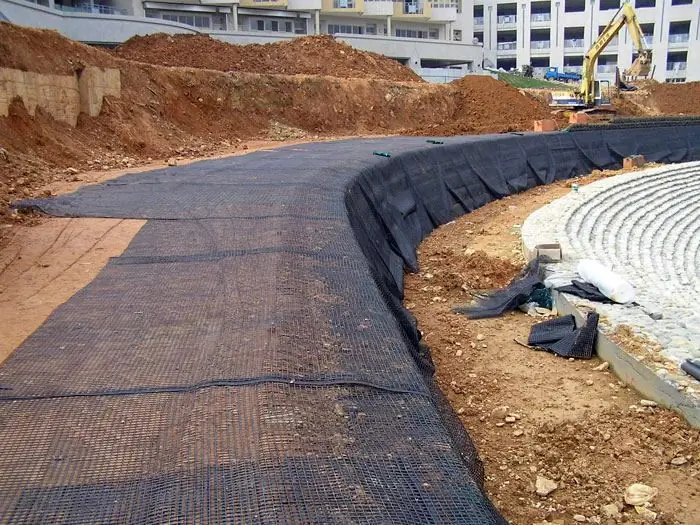
The following geogrid technology is used directly for reinforcing complex landscape areas on the ground:
- Measurements and planning of the target area are being made. For this, measuring equipment is used, as well as manual devices like levels and levels.
- In the case of dump slopes, compaction is mandatory. This problem is solved by manual rolls or a vibrating plate.
- The material is rolled out over the marked and prepared area. As the instruction for strengthening slopes with geogrids notes, regardless of the angle of the slope, the upper part of the coating should capture the horizontal plane by at least 50 cm.
- The material is fixed with special fasteners in accordance with the optimal tension force for a particular case.
- A control measurement is being carried out and the physical condition of the laid geogrid is being assessed.
- The construction honeycombs are filled with loose material.
Used fixing materials
Geogrid laying can be done both in single and multiple order. That is, it is not necessary for one site to strive to be limited to one module - the possibilities for coupling and forming strong seams eliminate the problems of destroying a single reinforcing fabric. Another thing is that each module must be fixed at the edges in a separate order, regardless of whether the adjacent module is mated with it. This should be the starting point when determining the number of fasteners.
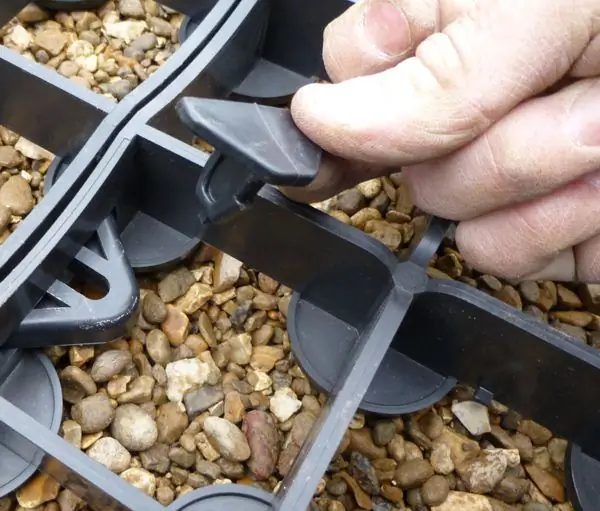
Installation of geogrids to strengthen slopes can be carried out by various technical means, but dowels, plastic or metal anchors, and steel reinforcement brackets are more often used. Fastening is carried out both along the edges and along the central axis. Moreover, it is not recommended to place the clamps in a straight line. The greatest strengthening effect will be provided by the configuration of the arrangement of fasteners in a checkerboard pattern. For attaching individual modules to each otherAdditionally, a pneumatic stapler is used. According to average calculations, it takes about 2,000 fasteners to fix 1 km2 of a continuous geogrid.
Which material to use as filler?
After installing the geoframework, you can start filling its cells with bulk material. In this capacity, both ordinary soil and sand-gravel mixtures can act. The choice is determined by the requirements for strengthening and appearance of the coating. And if in the case of road embankments, the strengthening of slopes with a geogrid is not at all focused on decorative tasks and can be supplemented with concrete supports, then in landscape design, on the contrary, a water supply infrastructure is created for watering vegetation. In this case, filling is carried out using fertile soil or a sand-peat mixture, after which seeds of ornamental plants or lawn are planted.
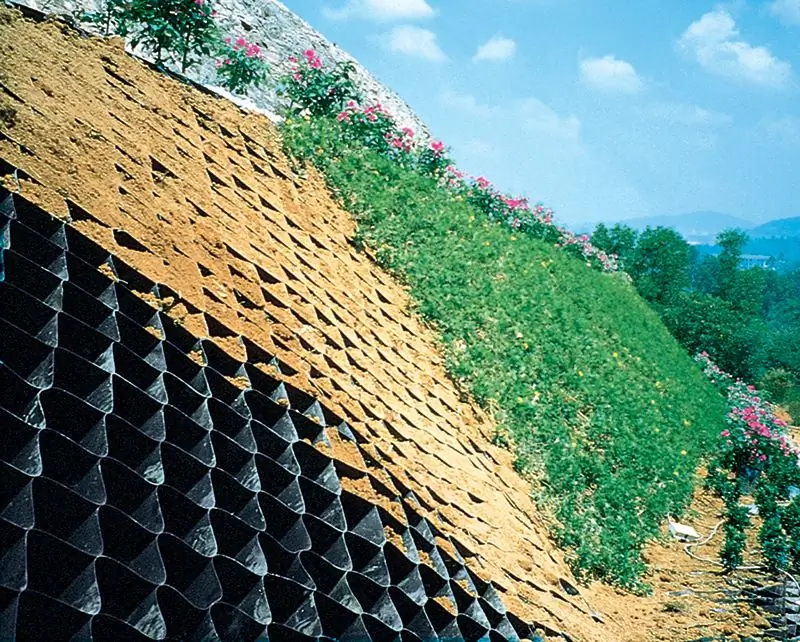
Tips for strengthening flood-proof slopes
The simplest type of sloped terrain for which two reinforcement schemes can be applied:
- The technique is suitable for loose and clayey soils. A geogrid is laid along the entire slope to strengthen the slope with subsequent fixation. In the upper part of the border of the modules should go under the stone stop, which will prevent the erosion of the slope during heavy rainfall.
- From the top and bottom, the infill geoframe cover must completely cover the slope. At the same time, a hermetic ditch is organized in the lower region, transporting wastewater to the nearestwater collector or sewer.
Technique for reinforcing flooded slopes
Regularly flooded slopes are subject to both their own erosion and destruction, and deformation of the outer reinforcing layers. In this regard, additional measures must be taken to protect the geoframework. Firstly, only a three-dimensional grid should be used, and secondly, an effective drainage material should be used as a filler - for example, crushed granite stone with a diameter of 20-40 mm. If an intensive water runoff is expected, then it is desirable to fill the surface of the grate with a concrete solution. Under the reinforcing layer itself, a protective layer is laid with reverse filtration based on the same geotextile.
Conclusion
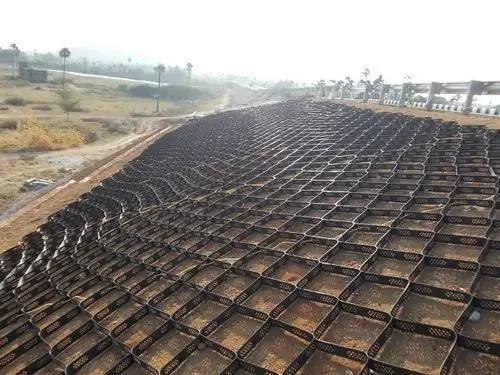
Against the background of the active process of urbanization and the rapid pace of urban life, interest in natural objects with all the attributes of landscape design is growing. At the same time, there is a need to solve problems related to the protection of the natural soil mass from water washout and erosion. To prevent the negative consequences of such phenomena on the slopes, geogrids are used. This is a simple and effective solution, which is quite attractive in terms of financial costs. For example, the Geospan geogrid for strengthening slopes in the basic version costs about 150 rubles/m2. This is a structure with a three-dimensional honeycomb structure based on polyethylene tapes, the honeycombs of which can be filled with crushed stone, soil and sand. There are also more functional modifications, includingdesigned for operation in a wide temperature range from -60 to 70 °С.






